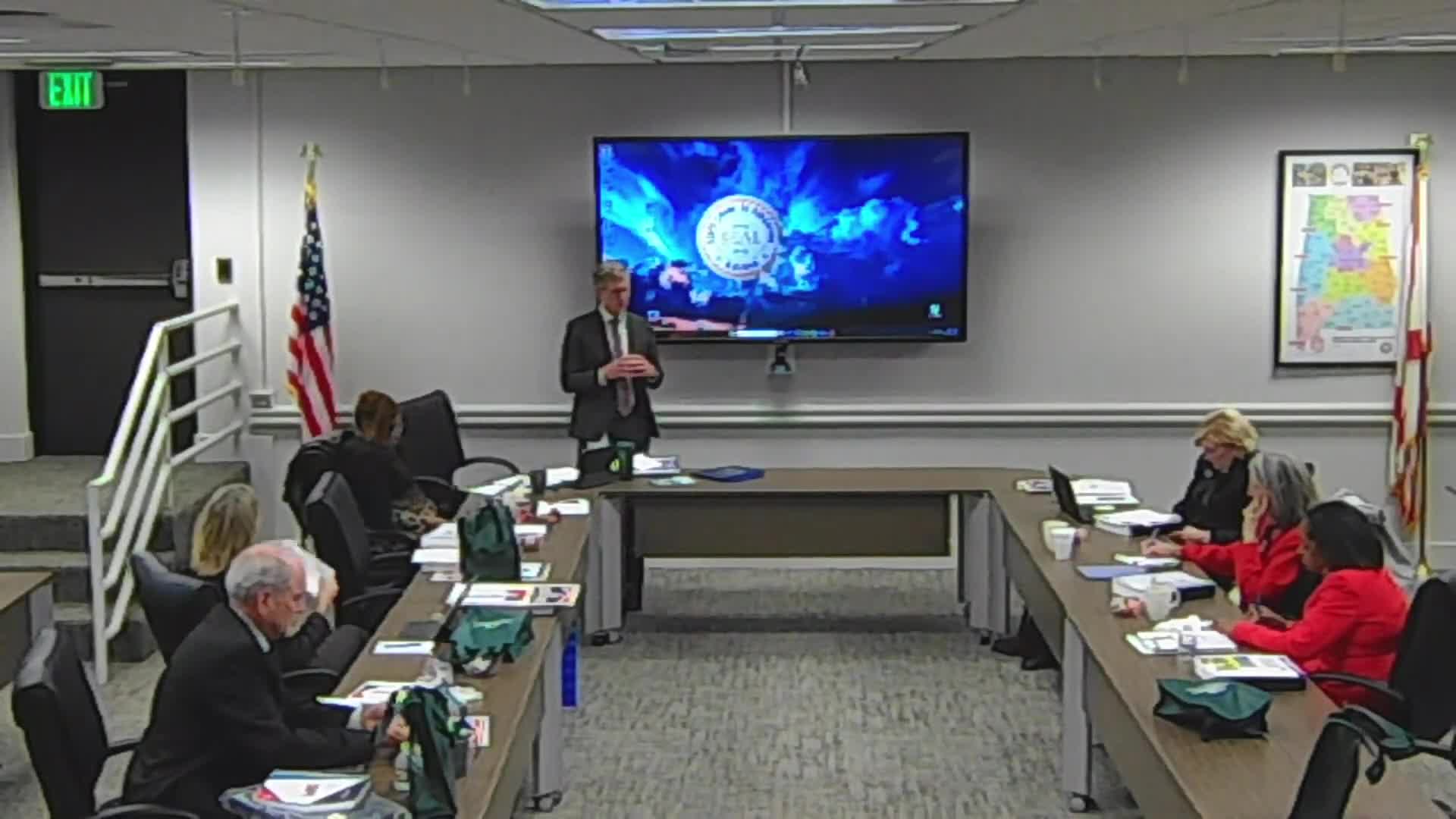Governor proposes $110M funding for student weights in education budget overhaul
May 29, 2024 | Alabama State Department of Education, State Agencies, Executive, Alabama

This article was created by AI summarizing key points discussed. AI makes mistakes, so for full details and context, please refer to the video of the full meeting. Please report any errors so we can fix them. Report an error »

The Alabama State Board of Education held a work session on May 29, 2025, to discuss significant developments in funding for education. The meeting focused on two primary components of a funding study initiated by the legislature: base funding and student funding weights.
The discussion began with an overview of the base funding, which is referred to as the foundation program. It was announced that the base funding would remain unchanged. However, the introduction of student funding weights was a key topic. The governor's proposal included an allocation of approximately $110 million to enhance funding for specific student populations, particularly English Learners (EL) and students with special needs.
A notable aspect of the proposal is the addition of $10 million specifically for EL students. This funding will be distributed according to the existing EL formula, which allocates more resources to districts with higher concentrations of EL students. The meeting highlighted that this funding would build upon the current structure rather than create a new system.
In addition to the funding for EL students, the proposal includes $40 million for special education. This funding will be based on official child counts conducted each fall, ensuring that all qualifying students receive equal financial support, regardless of their specific disabilities. The approach aims to simplify the funding process, contrasting with other states that have more complex categorization systems.
Furthermore, the board discussed an additional $40 million designated for economically disadvantaged students, primarily those qualifying for Medicaid or food assistance. This funding will be calculated based on the number of students eligible for free and reduced lunch, with a straightforward distribution method outlined.
The meeting concluded with a commitment to further analyze the proposed funding allocations and their implications for Alabama's education system. The board plans to run calculations to determine the exact distribution amounts per child, ensuring transparency and clarity in the funding process. Overall, the discussions underscored a significant step towards addressing the financial needs of diverse student populations in Alabama.
The discussion began with an overview of the base funding, which is referred to as the foundation program. It was announced that the base funding would remain unchanged. However, the introduction of student funding weights was a key topic. The governor's proposal included an allocation of approximately $110 million to enhance funding for specific student populations, particularly English Learners (EL) and students with special needs.
A notable aspect of the proposal is the addition of $10 million specifically for EL students. This funding will be distributed according to the existing EL formula, which allocates more resources to districts with higher concentrations of EL students. The meeting highlighted that this funding would build upon the current structure rather than create a new system.
In addition to the funding for EL students, the proposal includes $40 million for special education. This funding will be based on official child counts conducted each fall, ensuring that all qualifying students receive equal financial support, regardless of their specific disabilities. The approach aims to simplify the funding process, contrasting with other states that have more complex categorization systems.
Furthermore, the board discussed an additional $40 million designated for economically disadvantaged students, primarily those qualifying for Medicaid or food assistance. This funding will be calculated based on the number of students eligible for free and reduced lunch, with a straightforward distribution method outlined.
The meeting concluded with a commitment to further analyze the proposed funding allocations and their implications for Alabama's education system. The board plans to run calculations to determine the exact distribution amounts per child, ensuring transparency and clarity in the funding process. Overall, the discussions underscored a significant step towards addressing the financial needs of diverse student populations in Alabama.
View full meeting
This article is based on a recent meeting—watch the full video and explore the complete transcript for deeper insights into the discussion.
View full meeting
